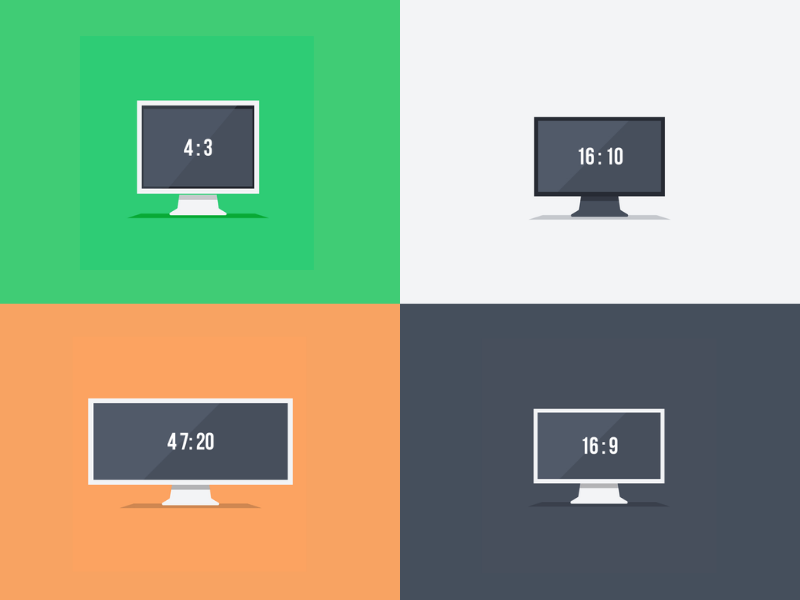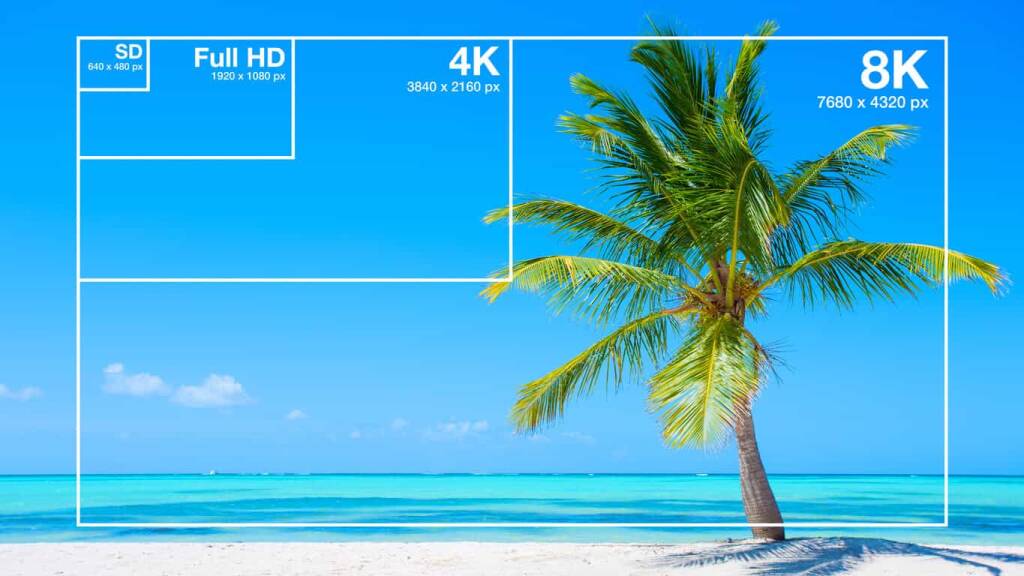Video aspect ratio refers to the proportional relationship between the width and height of a video image.
With the rise of video streaming, understanding different aspect ratios has become more important than ever. According to a Fortune Business Insights report, the global video streaming market was valued at $554.3 billion in 2023. By 2032, it is expected to grow from $671.89 billion in 2024 to a staggering $2,486.51 billion, with a compound annual growth rate (CAGR) of 17.8%. This growth is fueled by the increasing use of mobile devices and the widespread availability of high-speed internet.
Whether you are creating content for YouTube, Facebook, or other popular streaming platforms, choosing the right aspect ratio can enhance video quality. It ensures your videos display properly across different devices and platforms. From standard formats like 16:9 and 4:3 to cinematic widescreen ratios, there are numerous options to consider.
In this article, we will explore the concept of video aspect ratio, its significance, and how it impacts the viewing experience of videos. We will also discuss the most common aspect ratios and their applications.
What is Video Aspect Ratio?
Aspect ratio refers to the relationship between the width and height of an image or video frame. A ratio of two numbers, where the first number represents the width, and the second number represents the height. For example, an aspect ratio of 16:9 means that the width is 16 units and the height is 9 units.

The Importance of Video Aspect Ratio
Video aspect ratio is crucial because it determines how the video appears on different screens. The aspect ratio of a video frame can be either narrow or wide, depending on the dimensions of the video. If the aspect ratio of the video is not appropriate for the screen on which people view it, the video may appear stretched or distorted.
Yolocast would be a perfect choice for video solutions.
Common Aspect Ratios
There are several aspect ratios commonly used in video production, each with its unique characteristics and applications. Let’s explore the most common aspect ratios and their applications.

1. 4:3 Aspect Ratio
The 4:3 aspect ratio was standard for television screens until the early 2000s. It has a more square-like shape, where the width is four units, and the height is three units. This aspect ratio is still commonly used for some presentation formats, such as slide shows, but it is becoming increasingly rare in video production.
2. 16:9 Aspect Ratio
The 16:9 aspect ratio is the standard for most modern television and computer screens. It has a rectangular shape, where the width is sixteen units, and the height is nine units. Usages of the aspect ratio are in video production for various formats, such as YouTube videos, films, and TV shows.
3. 21:9 Aspect Ratio
Commonly cinemas use the 21:9 aspect ratio. It has a more panoramic shape, where the width is 21 units, and the height is nine units. This aspect ratio is ideal for films that want to create an immersive viewing experience.
4. 1:1 Aspect Ratio
The 1:1 aspect ratio is a square aspect ratio, where the width is equal to the height. Social media platforms, such as Instagram and TikTok, use this aspect ratio, where there is a trend of square videos.

How Aspect Ratio Affects the Viewing Experience
The aspect ratio of a video plays a significant role in how the viewer perceive the video. The aspect ratio determines the amount of visual information that display in a frame and can impact the overall mood and atmosphere of the video. For example, a wide aspect ratio, such as 21:9, can create a cinematic and immersive experience, while a square aspect ratio can create a more intimate and personal feeling.
Please click here to find more details.
How to Choose the Right Aspect Ratio for Your Content
Aspect Ratios for Social Media Platforms
Instagram:
- Feed Videos: Use 1:1 (square) or 4:5 (slightly vertical).
- Stories and Reels: Use 9:16 for full-screen vertical videos.
YouTube:
- Standard Videos: Use 16:9 for widescreen viewing.
- Shorts: Use 9:16 for vertical content optimized for mobile screens.
Facebook:
- Feed Videos: 1:1 (square) or 4:5 formats work best.
- Stories: Use the 9:16 vertical format for full-screen display.
TikTok:
TikTok exclusively uses the 9:16 vertical aspect ratio. This full-screen format is perfect for engaging mobile audiences.
Video Aspect Ratio vs. Resolution
What’s the Difference?
- Aspect Ratio: Determines the shape of the video (e.g., 16:9, 4:3).
- Resolution: Refers to the number of pixels, such as 1920×1080 (HD) or 3840×2160 (4K).
For example, a 1920×1080 video has a 16:9 ratio, but a 1080×1080 video has a 1:1 ratio.
Why Does It Matter?
Choosing the wrong aspect ratio can distort your video. Stretching or cropping may remove important elements. By aligning resolution and aspect ratio, you preserve video quality and viewer experience.
Conclusion
In conclusion, understanding video aspect ratio is essential for creating videos that look their best on different screens. The aspect ratio of a video determines how it appears to the viewer and can impact the overall viewing experience. By selecting the appropriate aspect ratio for a video, content creators can ensure that their videos look their best and create the intended atmosphere.

12,971 total views, 7 views today

Aura, the marketing specialist at YoloLiv. With her extensive work experience and motivated work attitude, she continually encourages user issue solutions and feature request fulfillment in order to satisfy the demands of more people.


